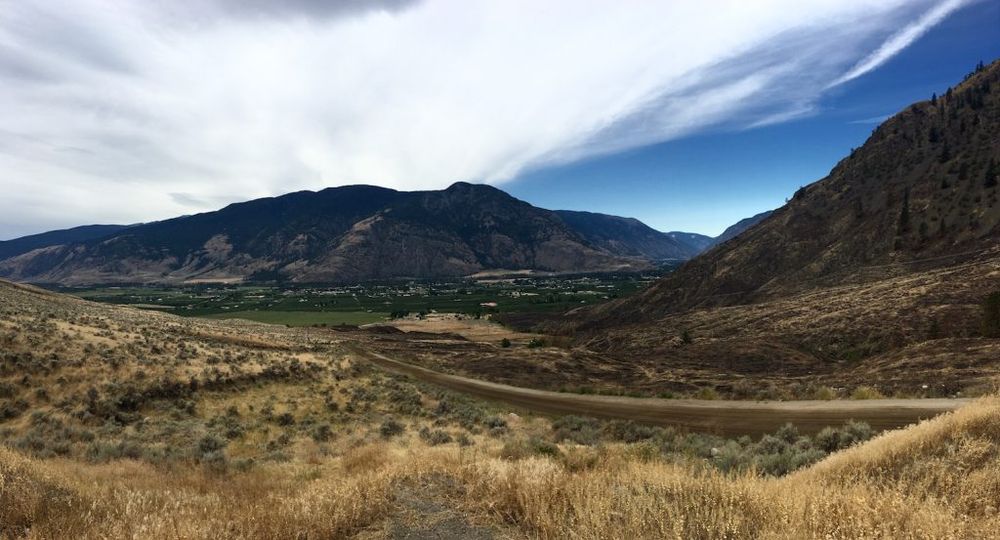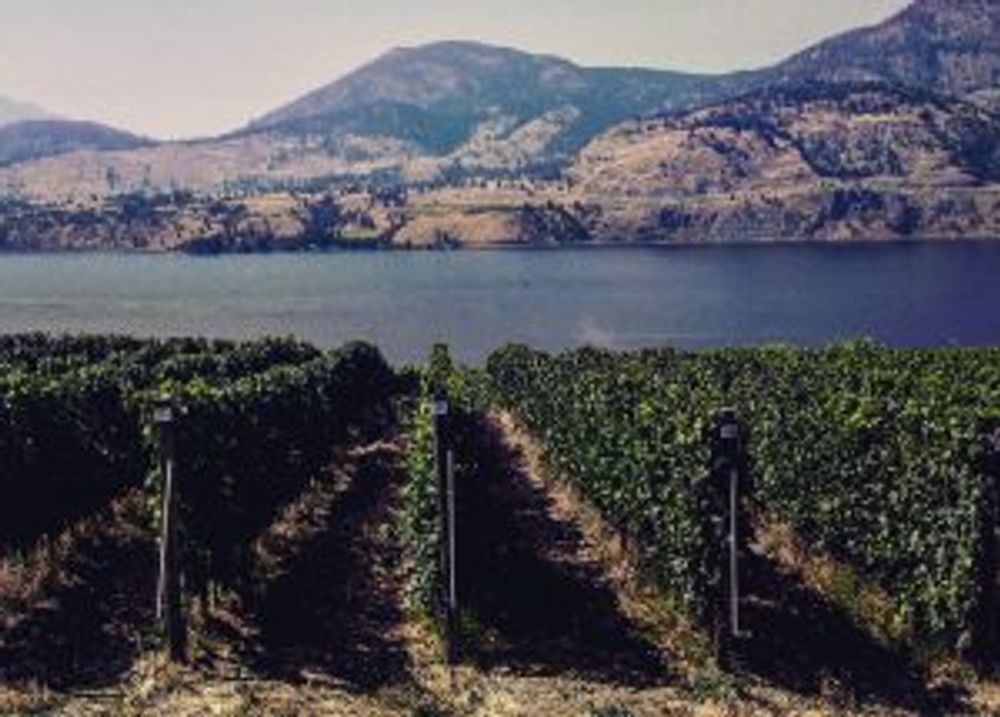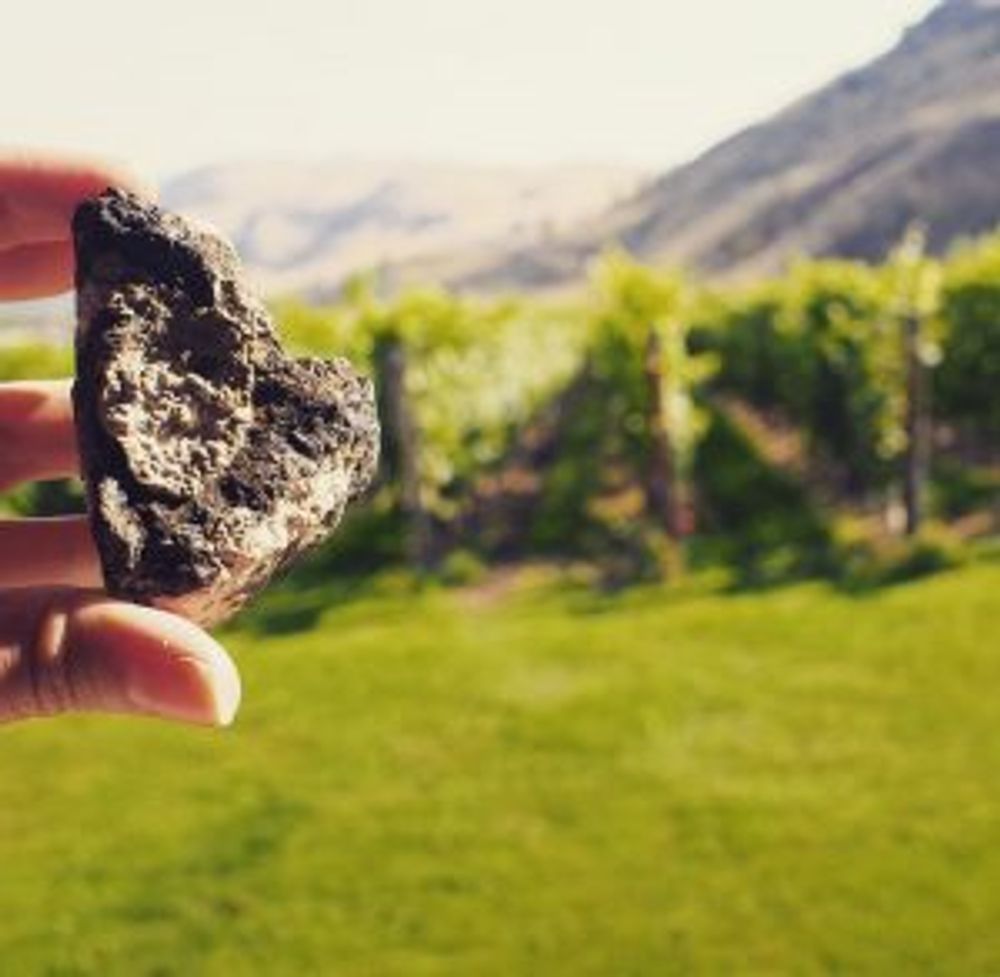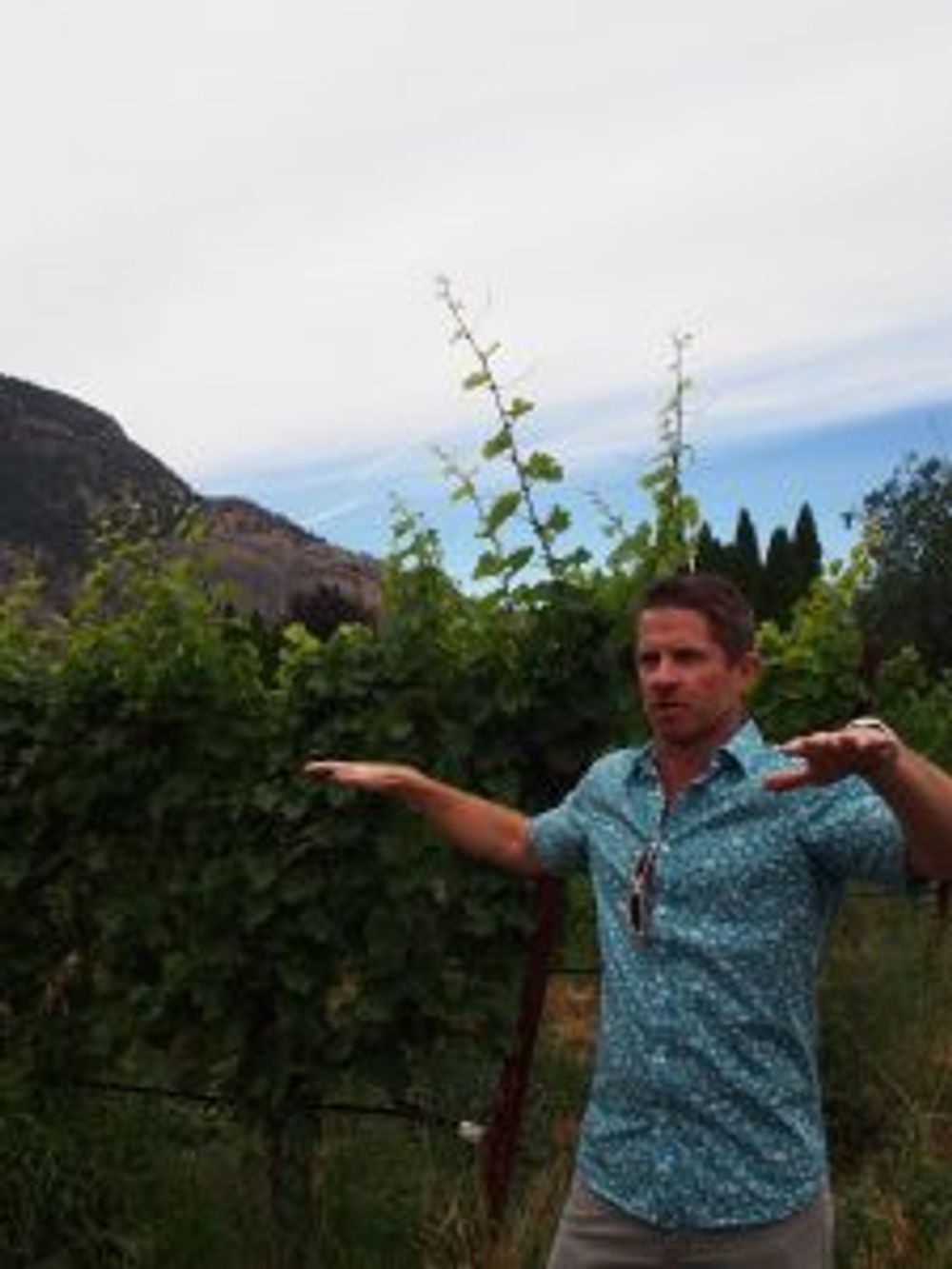“Our region’s like the Wild West, but our transition period has been so fast. We’re getting a grasp on our region and understanding our sense of place; I love our diversity and micro regions.” – Jay Drysdale, Bella Wines.

Jay Drysdale
Prior to setting foot on Canadian soil, I sat leafing through John Schreiner’s book, Okanagan Wine Tour Guide and pondering on what to expect. Schreiner’s book is excellent, with a good overview of British Columbia and double-page insights into all of the region’s wineries. While giving me great insight into plantings and winemaking principles and even experimental winemaking, it was difficult to know what to visualise.

Similkameen Valley: “How did Mother Nature do that?!”
The Okanagan Valley stretches 160km from North to South, with 3,490 hectares planted to vines. It also sees over 60 grape varieties planted, making it incredibly diverse. Meanwhile, the younger Similkameen Valley, whose first winery set root in 1984, today has 19 wineries and just 265 hectares. Externally to this, Vancouver Island, Fraser Valley and the Gulf Islands also have expansive vineyards planted, contributing to circa 10% of the vineyards of British Columbia, and there is a significant amount of younger emerging regions, such as the Kootenay district further inland.

Skaha Lake from Painted Rock Winery
Flying from Vancouver to Kelowna, I gazed over one of the most extreme terrains I have seen to date. Rocky mountains, snow, glacial lakes and forests; I found myself squinting to see if I could pick out a grizzly bear somewhere (sadly I couldn’t). Landing in our small propeller jet, we went straight to the Okanagan Lake. In this short space of two hours I had begun to comprehend the extremely complex terrain that is British Columbia.
Over the next five days, we were to explore the Okanagan and the Similkameen, visiting 15 wineries in total. We also examined Chardonnay and Syrah in comparative winemaker tastings, sat down to examine six international Pinot Gris, six British Columbia Pinot Gris, six international Merlot and six British Columbia Merlot wines blindly, in what was called the ‘Judgement of British Columbia’. Finally, I also tasted and made notes on 54 examples of British Columbia Pinot Noir at the British Columbia Pinot Noir Celebration.
To understand British Columbia you need to first understand the geology of the region

Don Triggs explained that the glacial lakes had contained a high proportion of dissolved minerals, which left deposits on the rocks when they receded, which in turn remains in the soil.
I’ll begin this piece by discussing briefly the geology of British Columbia, and more specifically the Okanagan. This is what I feel makes the region highly unique, and furthermore means that it is one of the few regions worldwide that is able to successfully plant such a broad range of grape varieties with resulting freshness in the wines.
British Columbia was shaped the way we see it today due to glacial activity, the last of which occurred approximately 10,000 years ago. Bedrock geology is composed mainly of basalt and granite and other rock formations, with surficial geology varying immensely due to the movement of the aforementioned glacial activity, which caused large deposits of glacial till: silt, sand and gravel on the bottom and sides of the valley. Thus, we find a lot of sand-heavy soils in the South, and a lot of rocky, sparse soils in the North, with varying differentiations in between.
There is huge respect for Mother Nature here. Don Triggs of Culmina spoke about the enormous variations in terroir and half laughed in awe, “How did Mother Nature do that?!”
The valley also contains lakes, the largest of which is the Okanagan, with the Skaha and the Vaseux moving down the region. Furthermore, there are differing microclimates surrounding the lake and according to exposure, with the east side being much warmer and the west side much cooler due to the evening sun. General climate also varies, with inland Okanagan and Similkameen being cool continental and very extreme, with temperatures able to dip below -20°C in winter and over 40°C in summer.

Michael Clark and Amanda Elyzen of Clos du Soleil
It is pretty much as far from a homogenous region as you can get, with all of these factors contributing to why the region is one of the few in the world that can grow Cabernet Sauvignon close to Riesling. Michael Clark of Clos du Soleil explained, “If I go back to Europe and tell people I plant Cabernet near Riesling, they’d think I was a total fool.”
Darryl Brooker echoed this while tasting at Mission Hill Winery, expressing “we should try and celebrate our diversity and not pigeon hole ourselves into one or two varieties.”
This is a young wine region that defies easy generalisations
Due to all of these factors, it is impossible to make generalisations of the region. Furthermore, it is a young region, with its first vinifera vines planted in the mid 70s. The region really propelled forwards in the 90s with Canada’s signing of the North American Free Trade Agreement and the following vine-pulling scheme by the Canadian government that gave grants for growers who uprooted their hybrid vines and replanted with vinifera.
This makes it very exciting as, to some degree, the growers are still planting and discovering what works in the region, on their own soils and own microclimates. As the vines are comparatively still young, it will also be interesting to see what happens with vine age.
It is an extremely dry region, with an average of between 318mm and 415mm of rainfall a year, which means that irrigation is necessary for the majority of growers, although some are able to dry farm and some are experimenting with bush vine plantation. I expect with vine age we will see more growers able to dry farm, dependent on their terroir and how deep reserves lie.
This dryness means that organic viticulture is prevalent in British Columbia, with many wineries organic or in conversion.
Indeed, as an example, the Mission Hill group of Mission Hill, CedarCreek, Martin’s Lane and CheckMate are all in conversion; their total surface area represents 10% of British Columbia. Flint Wines will be importing these wineries to the UK. Okanagan Crush Pad is also a pioneer in converting vineyards to organics and planting organically.
Furthermore, there is an increasing interest in biodynamics.

Rhys Pender MW of Little Farm
I was also impressed by the amount of growers using indigenous yeasts, which is a clear indicator of vine and vineyard health. This was expressed clearly by Aussie David Paterson of Tantalus, stating “We want to achieve a sense of balance; we take methods from organic viticulture and biodynamics; taking all aspects of the vineyard into account.” These were thoughts I saw echoed through the majority of winemakers we would visit, with Rhys Pender MW of Little Farm looking out at his vines saying “we let nature take care of itself.”
Paterson continued to say, “I thought I’d only be here a couple of years, but I have a real connection to the land here. It’s exciting to be in a burgeoning region.” It’s not just Paterson – there’s a huge growth of young winemaking talent from abroad migrating to the region, from Australia, New Zealand, France, Germany and further afield, bringing techniques, thoughts and methods of their own to the table. This is further shown by names such as Alberto Antonini and Pedro Parra coming into the region to consult and give thoughts on these unique terroirs.
Acidity, winemaking vessels, and particular varietals – all impressive
One of the defining factors I came to grips with during my time in British Columbia was the impressive acidity that runs through the majority of the wines, creating real backbone. The region has a relatively short growing season that seems to harness this acidity into the core structure of the wines.
I’ll be discussing this in my pieces to come, in combination with the unique soil types and my assessment on their contribution to the wines, as well as the unique tannin structure they also possess.
There’s also very clever use of vessels in British Columbia (concrete, eggs, amphorae but to name a few), with much less dominant oak than in other regions. I was particularly impressed by Riesling, which not only has a unique bright expression but also appears to have great capacity for ageing, shown through verticals of Tantalus, CedarCreek, Orofino and Little Farm. Syrah, and in particular Gamay also showed highly unique characteristics, and Pinot Noir, Pinot Gris, Bordeaux varieties, Semillon, Chardonnay and Viognier are also of great interest and potential.
These are the varieties that I will be further exploring in my next pieces.
To be continued…










































